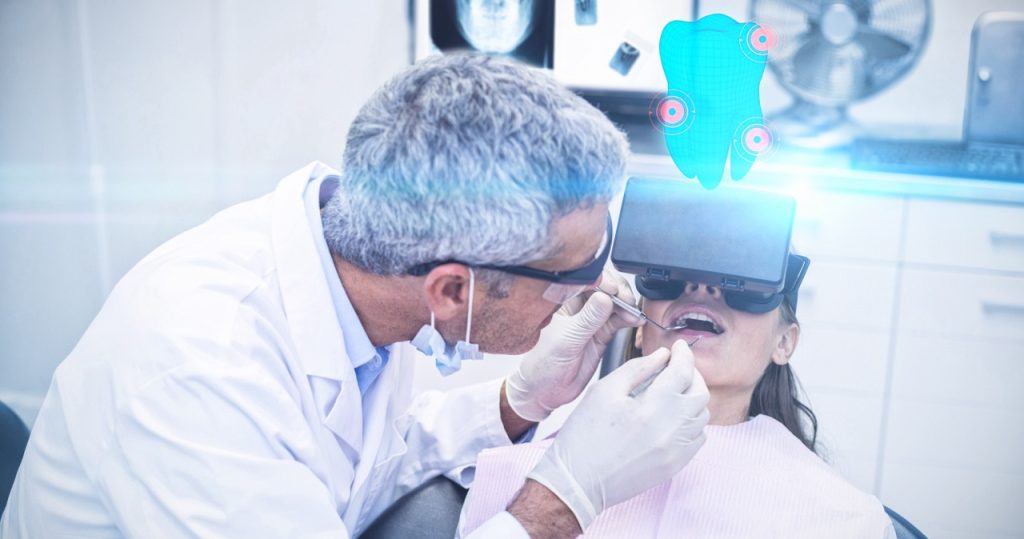
Immersive technologies such as Virtual Reality (VR) and Augmented Reality (AR) are making significant inroads into dental care. These technologies are transforming the patient experience by enhancing education, reducing anxiety, and improving treatment outcomes.
Applications of Immersive Technologies:
- Virtual Reality (VR): VR is being used to help patients, especially children and those with dental anxiety, by providing immersive experiences that distract and relax them during procedures. Patients can wear VR headsets and be transported to calming environments, significantly reducing stress and discomfort during dental treatments.
- Augmented Reality (AR): AR is used for patient education and procedural guidance. Dentists can overlay digital information on a patient’s real-world view, showing detailed images of the patient’s dental condition and proposed treatment plans. This helps patients better understand their treatment options and what to expect, improving communication and trust between the dentist and patient.
- Training and Simulation: Both VR and AR are powerful tools for training dental professionals. These technologies provide realistic simulations of dental procedures, allowing students and practitioners to practice and refine their skills in a risk-free environment. This leads to better-prepared dentists and improved patient care.
Immersive technologies are poised to revolutionize dental care by making treatments more patient-centric and enhancing the educational aspects of dental visits. As these technologies become more widespread, they promise to create a more comfortable, informed, and effective dental experience for patients and professionals alike.

